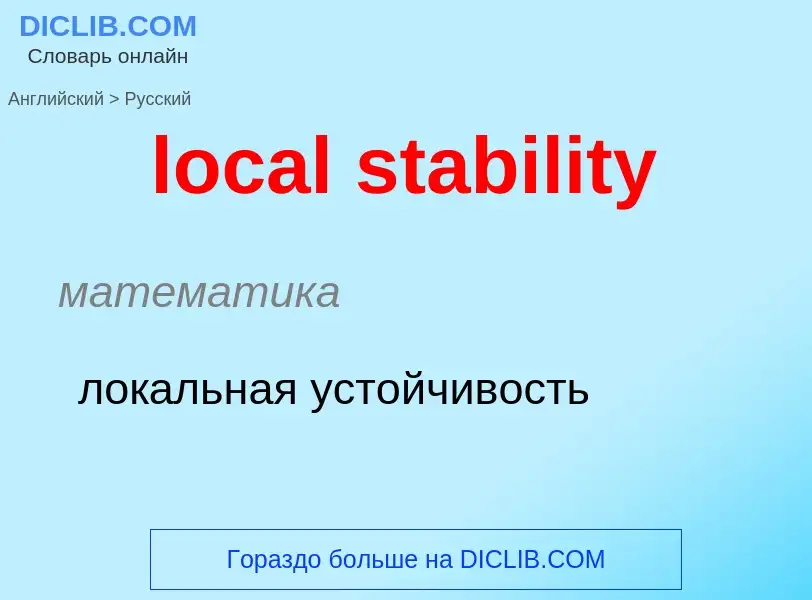Перевод и анализ слов искусственным интеллектом ChatGPT
На этой странице Вы можете получить подробный анализ слова или словосочетания, произведенный с помощью лучшей на сегодняшний день технологии искусственного интеллекта:
- как употребляется слово
- частота употребления
- используется оно чаще в устной или письменной речи
- варианты перевода слова
- примеры употребления (несколько фраз с переводом)
- этимология
local stability - перевод на русский
математика
локальная устойчивость
локальная устойчивость
[metə'steib(ə)l]
общая лексика
метастабилен
метастабильный
метаустойчивый
прилагательное
физика
метастабильный
общая лексика
метастабильная фаза
математика
устойчивость в целом
общая лексика
метастабильность
математика
метаустойчивое состояние
медицина
метастабильное состояние
общая лексика
начальная остойчивость
общая лексика
местная анестезия
Определение
Википедия
In chemistry and physics, metastability denotes an intermediate energetic state within a dynamical system other than the system's state of least energy. A ball resting in a hollow on a slope is a simple example of metastability. If the ball is only slightly pushed, it will settle back into its hollow, but a stronger push may start the ball rolling down the slope. Bowling pins show similar metastability by either merely wobbling for a moment or tipping over completely. A common example of metastability in science is isomerisation. Higher energy isomers are long lived because they are prevented from rearranging to their preferred ground state by (possibly large) barriers in the potential energy.
During a metastable state of finite lifetime, all state-describing parameters reach and hold stationary values. In isolation:
- the state of least energy is the only one the system will inhabit for an indefinite length of time, until more external energy is added to the system (unique "absolutely stable" state);
- the system will spontaneously leave any other state (of higher energy) to eventually return (after a sequence of transitions) to the least energetic state.
The metastability concept originated in the physics of first-order phase transitions. It then acquired new meaning in the study of aggregated subatomic particles (in atomic nuclei or in atoms) or in molecules, macromolecules or clusters of atoms and molecules. Later, it was borrowed for the study of decision-making and information transmission systems.
Metastability is common in physics and chemistry – from an atom (many-body assembly) to statistical ensembles of molecules (viscous fluids, amorphous solids, liquid crystals, minerals, etc.) at molecular levels or as a whole (see Metastable states of matter and grain piles below). The abundance of states is more prevalent as the systems grow larger and/or if the forces of their mutual interaction are spatially less uniform or more diverse.
In dynamic systems (with feedback) like electronic circuits, signal trafficking, decisional, neural and immune systems, – the time-invariance of the active or reactive patterns with respect to the external influences defines stability and metastability (see brain metastability below). In these systems, the equivalent of thermal fluctuations in molecular systems is the "white noise" that affects signal propagation and the decision-making.

